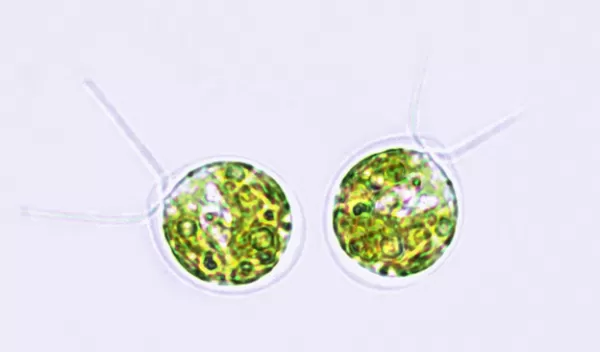
Can algae unlock the secrets of photosynthesis?
A team led by Carnegie plant biologists has undertaken the largest functional genomic study to date of a photosynthetic organism. The U.S. National Science Foundation-supported research, published in Nature Genetics, could inform strategies for improving agricultural yields and mitigating climate change.
Photosynthesis is the biochemical process by which plants, algae and certain bacteria can convert the sun's energy into chemical energy in the form of carbohydrates.
"It is the foundation upon which life as we know it is able to exist," said Carnegie's Arthur Grossman, a co-author of the paper.
"It makes our atmosphere oxygen-rich while capturing a percentage of the climate-change-causing greenhouse gases, mostly CO2, that are spewed into the atmosphere by human activity, and it is the mainstay of our food supply."
Yet despite the fundamental importance of photosynthesis, many of the genes associated with it remain uncharacterized. Algae, however, present an accessible vehicle for unlocking the genetic information that underpins this vital process.
A catalog of mutants of the single-celled photosynthetic green alga Chlamydomonas reinhardtii developed by Princeton University's Martin Jonikas enabled plant scientists to begin to understand the functions of thousands of genes that are present in photosynthetic organisms.
"We anticipate that our work will guide the functional characterization of genes across the tree of life," Grossman said. The knowledge gleaned from this research could underpin strategies for improving the yields of important food and biofuel crops in a warming world, and advance programs to capture and store carbon pollution from the atmosphere.
"The results of this study are a significant improvement in understanding genotype-phenotype relationships in photosynthetic organisms, and could impact how these organisms are used in biotechnology," said David Rockcliffe, a program director in NSF's Division of Molecular and Cellular Biosciences.
Co-authors of the paper also include Friedrich Fauser, Josep Vilarrasa-Blasi, José Dinneny, Rick Kim and Robert Jinkerson from Carnegie, as well as collaborators from Stanford University, the University of California, Riverside, Duke University, the University of California, San Francisco, UCLA, the University of California, Berkeley and Lawrence Berkeley National Laboratory.


